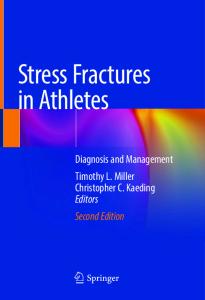Where have all the hip fractures gone?
- PDF / 161,571 Bytes
- 2 Pages / 595.276 x 790.866 pts Page_size
- 98 Downloads / 387 Views
LETTER TO THE EDITOR
Where have all the hip fractures gone? K. C. Wong 1
&
J. W. G. Cheok 1 & K. X. K. Tay 1 & S. B. Koh 1 & T. S. Howe 1
Received: 6 May 2020 / Accepted: 25 May 2020 # International Osteoporosis Foundation and National Osteoporosis Foundation 2020
Dear Editor, Amidst the coronavirus disease 2019 (COVID-19) pandemic, we have noticed a marked unexplained decrease in osteoporotic hip fracture surgeries in our institution. This is baffling and mirrors the unexplained reported decrease in heart attacks and strokes [1]. We also looked at time to surgery to see if our protocols during COVID-19 had compromised fracture care. Singapore’s Disease Outbreak Response System Condition (DORSCON) status escalated to Orange [2] in response to worsening community spread. Resource and manpower considerations affected all departments in our institution including the Department of Orthopedic Surgery [3]. This prompted an investigation into the quality of care afforded to hip fracture patients during the COVID-19 pandemic. We hypothesized that a well-executed treatment protocol ensures that care afforded to hip fracture patients should remain unaffected. We compared surgically managed hip fracture patients admitted 2 months before escalation to DORSCON Orange (“pre-COVID”), with patients admitted 2 months after (“post-COVID”). Indications for hip fracture surgery remain unchanged. We collected demographic data, time taken to be admitted to ward from the Emergency Department, as well as time elapsed between ward admission and surgery. We found a sharp decrease in hip fractures during the COVID-19 pandemic, with 76 pre-COVID patients compared with 35 post-COVID patients (54% decrease). There were no differences in demographic data, time to admission (2.0 ± 1.2 versus 1.7 ± 0.9; mean difference, 0.3; 95% CI, − 0.2 to 0.7; p = 0.20), and time to surgery (60.7 ± 45.1 versus 45.0 ± 42.3; mean difference, 15.7; 95% CI, − 2.2 to 33.6; p = 0.084) between both cohorts (Table 1). Our study population is a bellwether of orthopedic trauma care as most osteoporotic hip fractures are now treated
* K. C. Wong [email protected] 1
Department of Orthopedic Surgery, Singapore General Hospital Academia, Level 4 20 College Road, Singapore 169856, Singapore
surgically due to benefits of reduced length of hospital stay and improved rehabilitation [4]. In Singapore, emergency services have defined evacuation protocols to identified public hospitals. As the vast majority of hip fractures usually require emergency services for delivery to hospitals, which has not changed from the pre-COVID era, the proportion of hip fracture patients brought to our institution should not have changed. A similar pattern was noticed in myocardial infarctions in the USA where up to a 60% reduction in admissions was reported, postulated to be due to COVID-19 instilling a fear of face-to-face medical care as people would rather stay at home than risk seeking treatment [1]. With the need for additional perioperative precautions during this pandemic [5
Data Loading...











